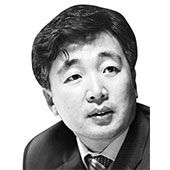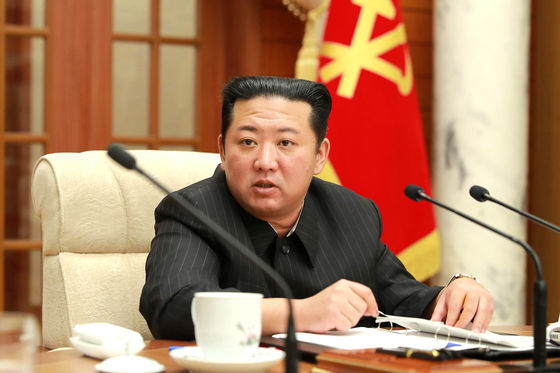Kim’s own timetable

Yeh Young-june
The author is an editorial writer of the JoongAng Ilbo.
After conducting four series of ballistic missile tests at the beginning of this year, North Korea has hinted that it will resume nuclear and intercontinental ballistic missile tests. It is a warning that Pyongyang will end its quietness, which continued since the breakdown of the Hanoi summit in February 2019, and change its attitude to aggressiveness. Depending on the North’s moves, tension on the Korean Peninsula will likely deepen again.
The Moon Jae-in administration’s attitude toward North Korea issues is astonishingly consistent. Senior government officials and ruling party leaders said Pyongyang’s latest moves are aimed at attracting Washington’s attention or are simply a negotiation strategy to take the higher ground in anticipation of talks. Experts close to the administration are issuing similar analyses. Top officials frequently make absurd remarks that an end-of-war declaration is more necessary than ever because the North fires missiles repeatedly.
Such views are as deeply rooted as the history of the North Korean nuclear problem. According to government officials and North Korea experts, the North’s provocations are Pyongyang’s unique way of asking for talks. The interpretation seems valid based on the North’s pattern of behavior over the past decades.
The extreme confrontation in 2017 was a prelude to the North’s participation in the PyeongChang Winter Olympics and its Singapore summit with the United States. After its first nuclear test, North Korea quickly joined negotiations and reached the Sept. 19, 2005 joint declaration in six-party talks.

In a meeting with members of the Workers’ Party on January 19, North Korean leader Kim Jong-un threatens to end his self-imposed moratorium on nuclear and ICBM tests. [NEWS1]
North Korea has repeated a cycle of staging a provocation, brinkmanship, signaling its intention to talk, participating in a negotiation (and buying time), abandoning an agreement and resuming provocations. At a particular point, it could be a useful analysis method to understand the North’s intention or predicting its short-term movement.
But when we look at the situation from a long-term perspective, it is a different story. The most crucial fact is that North Korea has become a de facto nuclear state while repeating those cycles. Whether it was acting aggressively or extending an olive branch, the country has never given up its goal of becoming a nuclear power. Even at the moment of signing an agreement at an international negotiation, North Korea was secretly developing nuclear weapons.
The North’s behavior appears to us as a brinkmanship, but it has its own mid-term and long-term strategy. North Korean leader Kim Jong-un is acting on this timetable. Without the timetable, there is no way to explain the four nuclear tests and 120 missile tests North Korea conducted during Kim’s 10-year rule. From the North Korean point of view, the inter-Korean and North-U.S. talks in 2018 were just a peace offensive following its successful completion of its nuclear arms program in 2017.
South Korea will lose all negotiations with North Korea if it fails to understand Pyongyang’s long-term strategy. There are many pieces of evidence that our grasp of the situation over the past 30 years has been extremely naïve. Over the years, South Korean leaders changed their stances from one that North Korea has no ability or intention to develop nuclear programs to another that North Korea’s nuclear development is a way of self-defense. It is now changed to a stance that Kim Jong-un has a strong intention to denuclearize.
Did the North’s goal and intention really change over the years and did its intention to give up nuclear weapons program suddenly appear and then disappear?
After North Korea successfully tested the engine for an intercontinental ballistic missile in 2017, Kim abandoned his dignity as supreme leader and danced while piggybacking a military engineer. Kim’s facial expression captured in that photo is his true intention.
Now, the North’s next agenda will become an Israel or Pakistan in Northeast Asia by winning tacit approval as a nuclear power. The decision by the Politburo of the Workers’ Party on Jan. 19 to review its self-imposed moratorium on nuclear and ICBM tests can be a strategic resolution to start the final stretch to realize this goal. Although it is still flexible, we must never flatly conclude that the North’s latest stance is just bluffing.
There is no need for North Korea to practice brinkmanship again, as it is no longer the country it once was. We must abandon the naïve belief that the North’s actions are to win food aid and that it will return to talks when the time comes.










with the Korea JoongAng Daily
To write comments, please log in to one of the accounts.
Standards Board Policy (0/250자)